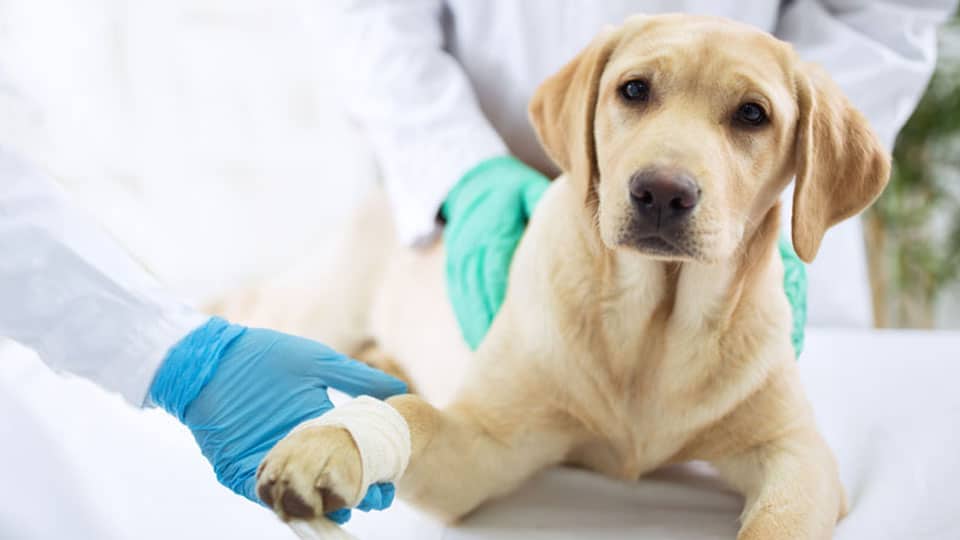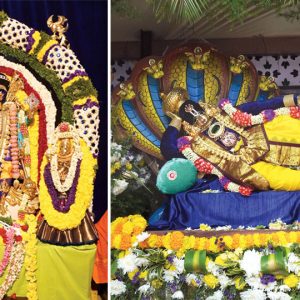In this week’s Pet Talk, Maneka speaks about fracture in animals and lumps on animal’s skin
By Maneka Gandhi
What is a fracture and how is it caused in animals?
Fracture is a broken bone. Any one of the bones in the body can be broken, but it is commonly the legs. Fractures can result from the animal being kicked, from falling, from putting its leg in a hole, or from fighting another animal.
How to recognise when a bone is broken?
A fracture will happen suddenly, it is not like a disease which takes time to develop. Sudden pain and an abnormal movement (lameness) often mean a fracture. The animal will be unwilling to use the part of its body where the fracture is. You may hear the sound (crack) of the two ends of the broken bone as the animal moves. The area around the closed fracture will become swollen. In an open fracture, there will be a wound and bleeding. The ends of the broken bone may show through the wound.
How to treat fractures?
In the case of a large animal, you must prevent the animal moving and ask for help from your veterinarian. Broken legs commonly occur in small or young animals. You should ask your veterinarian for help, but if this is not possible ask a paravet, or the bone setter, in the community to splint it. You can sometimes put dislocated bones back into place if you have someone to help you.
What are lumps on the animal’s skin?
A lump under the skin can appear in any place on the body. Lumps may grow and increase in size, or stop growing. Some are hot and painful. Some lumps contain pus (yellowish matter) or blood.
What are Abscesses?
Abscess means infection under the skin. An abscess is a swollen, red and painful lump under the skin. It contains pus (yellowish matter).
How and why are these lumps caused?
An abscess is caused by germs. Germs get under the skin by: i) Bites from other animals, or insects such as ticks and flies; ii) Sharp objects such as thorns or nails piercing the skin; iii) Injections or vaccinations which have been done with dirty needles; iv) Diseases – The lymph nodes (glands) can develop abscesses in some diseases.
Why are there lumps on my pet/animal’s skin near the glands or the armpits?
The lymph nodes in animals are similar to those which you have in your body under the jaw and armpits. When an animal is infected, the lymph nodes (glands) often become swollen and can be felt as lumps under the skin. In some diseases, this swelling becomes an abscess.
How to treat these lumps or abscesses?
Some abscesses will break open and the pus will come out. You may need to open an abscess, and can do so when it is soft. To do this quickly you should:
i) Clean the abscess and the area around it with soap and water. Stick a clean needle into the abscess. If blood comes out put the needle into another point on the abscess. If pus comes out when the needle is put into the abscess, remove the needle and with a clean sharp knife, razor blade or scalpel make a small hole through the skin into the pus pocket. Then cut downwards through the skin into the pus and allow the pus to drain out of the abscess. ii) When the pus has been removed, the abscess is treated as a wound.
iii) If the abscess is not ready to open, soak a cloth in hot water and put it over the abscess for 10 minutes at a time. You will need to do these four times daily for a few days until the lump has become large and soft and can be opened.
Pus contains germs. You should clean up the pus and collect it in a piece of paper or cloth and burn it. Wash the area of skin around the abscess. Wash your hands and disinfect all needles and instruments used. If the abscess is deep under the skin and does not break, and the animal has a fever, you will need to ask your veterinarian for help. Antibiotics or sulpha drugs can be given by mouth or by injection for 3 days if you cannot get veterinary help. Do not open abscesses of the lymph nodes but give an antibiotic or sulpha drug for 3 days to treat the infection.
Why are there lumps of blood under the skin?
This will result if an animal has been kicked or beaten. The lump is soft and not hot or painful, and will disappear in 2 to 3 weeks. You should not hit animals, or try to lift an animal by holding its skin. This will cause blood lumps under the skin.
What are solid lumps?
These are hard lumps which are not hot, like abscesses, or soft like blood lumps. Solid lumps may increase in size continuously, or stop growing after some time. You will need to ask your veterinarian for a diagnosis.
What are causes of poisoning in an animal?
Animals do not normally eat poisonous plants. A lack of other feed may cause animals to eat such plants. They may eat unfamiliar poisonous plants if they are moved to a new area where there are different poisonous plants.
Poisons such as warfarin (rat poison) and strychnine can be the causes of poisoning of animals. Arsenic dips may still be used in some areas and can lead to poisoning. Snake bite is the most common form of dangerous poisoning.
There are many causes of poisoning in animals. They are as follows: i) There are many poisonous plants. You should talk to your community and discover what poisonous plants are in your area; ii) Seeds for planting may have been treated with chemicals. If animals or humans eat these, they can die; iii) Strychnine is a poison used for wild animals. It poisons all animals and birds; iv) Weed killers used in agriculture may be poisonous; v) Chemicals used to kill insects on plants or used for dipping against external parasites; vi) Old paints, kerosene, diesel and other fuels and oils; vii) Poison used to kill rats and mice; viii) Animals can be poisoned by salt if they are not able to drink a lot of water; ix) Sometimes people deliberately poison animals.
How to identify the signs of poisoning in animal?
A poisoned animal may die suddenly, or will show the following signs: i) Excessive salivation; ii) The mouth is open, and the tongue hangs out; iii) Diarrhoea and vomiting; iv) Difficulty in breathing.
How to treat poisoned animals?
You cannot do much in a case of poisoning. You should ask for veterinary help as soon as possible. Try to discover what caused the poisoning and stop other animals from being poisoned. i) Charcoal mixed with water and given as a drench is a good treatment for poisoning. Give 1 gm for every 20 kg of body weight; ii) Kaolin (china clay), a white powder, can be mixed with water and given as a drench. Give 10 gm to a small animal and 200 gm to a horse or camel.
To join the animal welfare movement contact [email protected]
www.peopleforanimalsindia.org
PFA HELPLINE
Savitha Nagabhushan – 9845654429
Dogs, Puppies, cats, kittens available for adoption [Contact: Ph: 0821-2598213]
Timings: 8 am to 8 pm
Send Your QuestionsReaders with queries about their pets health, care and behavioural issues may send their questions to SOM : [email protected]








Recent Comments